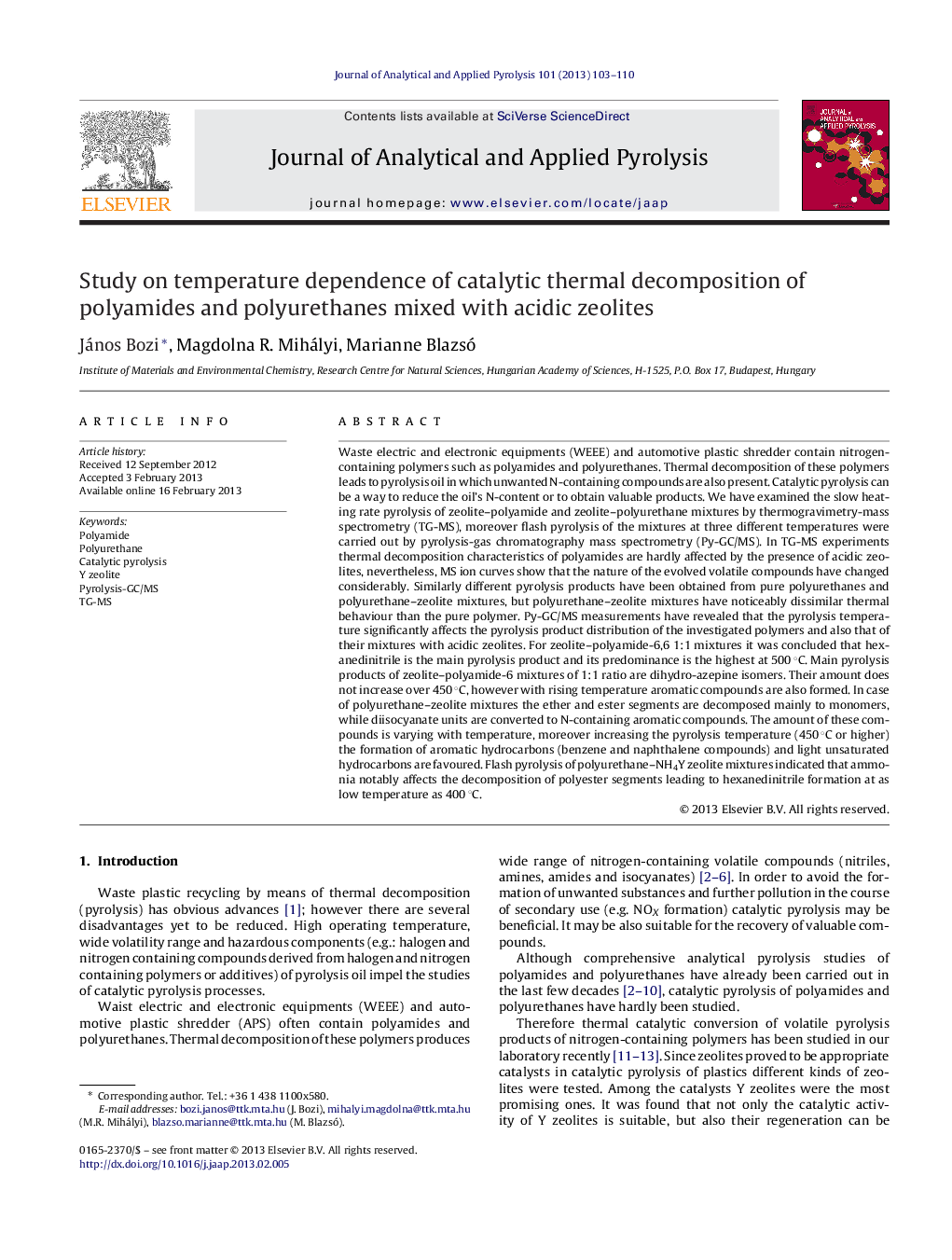| کد مقاله | کد نشریه | سال انتشار | مقاله انگلیسی | نسخه تمام متن |
|---|---|---|---|---|
| 1197465 | 1492976 | 2013 | 8 صفحه PDF | دانلود رایگان |

Waste electric and electronic equipments (WEEE) and automotive plastic shredder contain nitrogen-containing polymers such as polyamides and polyurethanes. Thermal decomposition of these polymers leads to pyrolysis oil in which unwanted N-containing compounds are also present. Catalytic pyrolysis can be a way to reduce the oil's N-content or to obtain valuable products. We have examined the slow heating rate pyrolysis of zeolite–polyamide and zeolite–polyurethane mixtures by thermogravimetry-mass spectrometry (TG-MS), moreover flash pyrolysis of the mixtures at three different temperatures were carried out by pyrolysis-gas chromatography mass spectrometry (Py-GC/MS). In TG-MS experiments thermal decomposition characteristics of polyamides are hardly affected by the presence of acidic zeolites, nevertheless, MS ion curves show that the nature of the evolved volatile compounds have changed considerably. Similarly different pyrolysis products have been obtained from pure polyurethanes and polyurethane–zeolite mixtures, but polyurethane–zeolite mixtures have noticeably dissimilar thermal behaviour than the pure polymer. Py-GC/MS measurements have revealed that the pyrolysis temperature significantly affects the pyrolysis product distribution of the investigated polymers and also that of their mixtures with acidic zeolites. For zeolite–polyamide-6,6 1:1 mixtures it was concluded that hexanedinitrile is the main pyrolysis product and its predominance is the highest at 500 °C. Main pyrolysis products of zeolite–polyamide-6 mixtures of 1:1 ratio are dihydro-azepine isomers. Their amount does not increase over 450 °C, however with rising temperature aromatic compounds are also formed. In case of polyurethane–zeolite mixtures the ether and ester segments are decomposed mainly to monomers, while diisocyanate units are converted to N-containing aromatic compounds. The amount of these compounds is varying with temperature, moreover increasing the pyrolysis temperature (450 °C or higher) the formation of aromatic hydrocarbons (benzene and naphthalene compounds) and light unsaturated hydrocarbons are favoured. Flash pyrolysis of polyurethane–NH4Y zeolite mixtures indicated that ammonia notably affects the decomposition of polyester segments leading to hexanedinitrile formation at as low temperature as 400 °C.
► Pyrolysis temperature affects the products of polymer–zeolite mixtures between 400 and 500 °C.
► Higher pyrolysis temperatures favours to the formation of aromatic compounds of one and two rings.
► In the presence of zeolites the thermal behaviour of polyamides apparently remains the same but the products are different.
► Polyurethane–zeolite mixtures have different thermal behaviour than the pure polymer.
Journal: Journal of Analytical and Applied Pyrolysis - Volume 101, May 2013, Pages 103–110